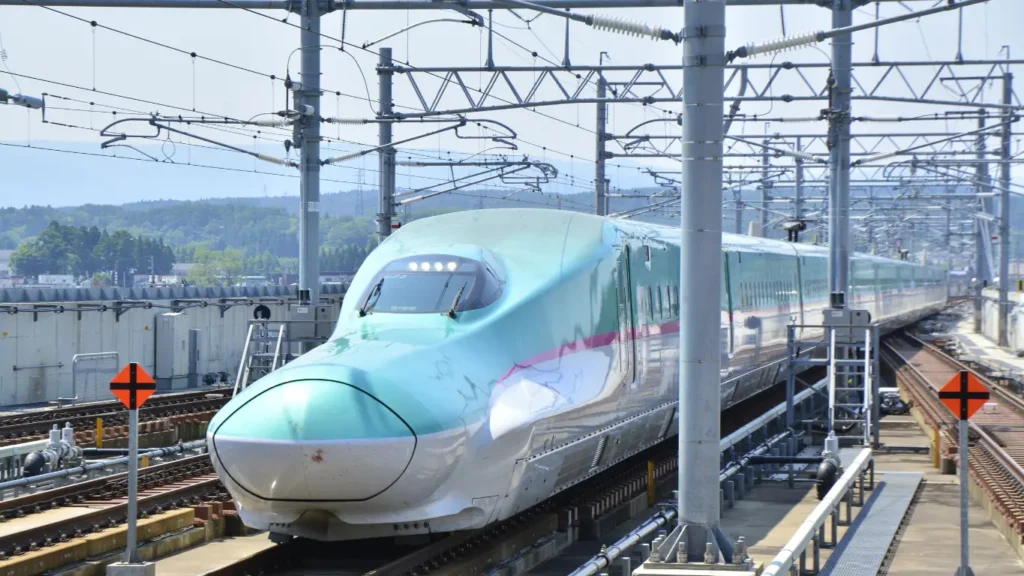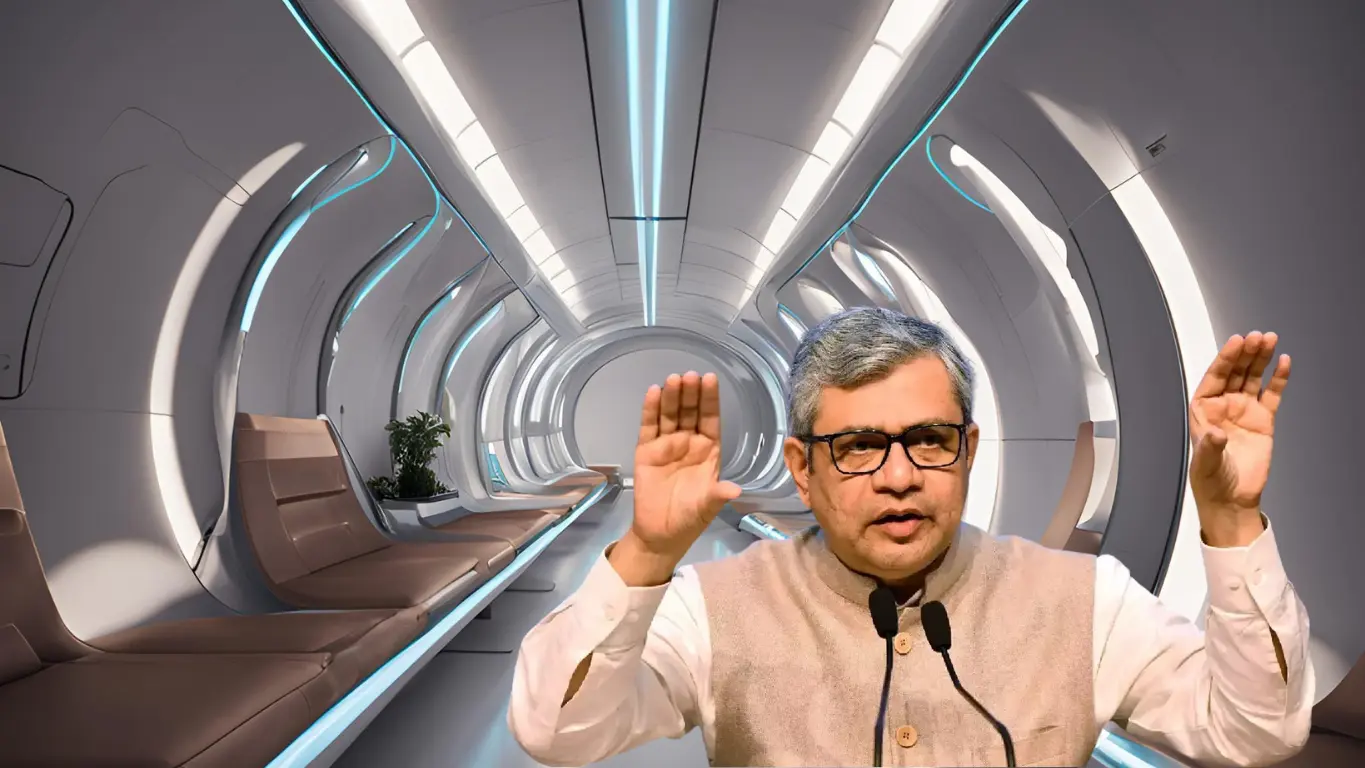
India, a land of vibrant diversity and rapid growth, is on the cusp of a transportation revolution with the advent of the bullet train in India. For decades, the Indian Railways have been the backbone of the nation’s mobility, ferrying millions across its vast expanse. However, the bullet train project in India promises to elevate this legacy by introducing high-speed rail travel, a leap toward modernity that aligns with India’s aspirations to become a global economic powerhouse. From an Indian perspective, this ambitious initiative is more than just infrastructure—it’s a symbol of progress, innovation, and the will to bridge distances faster than ever before.
In this blog, we’ll dive into the bullet train in India—its current developments, the bullet train route in India, speed potential, ticket pricing speculation, and the broader question: Does India need a bullet train? Let’s explore how this project is shaping India’s future.
The Genesis of India’s First Bullet Train
The bullet train in India saga began with the Mumbai-Ahmedabad High-Speed Rail (MAHSR) corridor, heralded as India’s first bullet train. Announced in 2017, this 508-kilometer project is a collaboration between India and Japan, drawing inspiration from Japan’s iconic Shinkansen system. Funded largely by a low-interest loan from Japan (₹88,000 crore), as detailed by The Economic Times, the initiative reflects a blend of Indian ambition and Japanese precision.
The National High-Speed Rail Corporation Limited (NHSRCL) oversees the bullet train project in India, aiming to connect two of India’s most bustling economic hubs—Mumbai and Ahmedabad—in under two hours. With a proposed bullet train speed in India of 320 km/h, this corridor promises to slash travel time from the current 6-7 hours by conventional trains to a mere 1 hour and 58 minutes with limited stops. For Indians accustomed to the reliable yet slower railway network, this is nothing short of a game-changer.
Current Developments in Bullet Train in India Progress
As of March 4, 2025, the bullet train in India progress has gained significant momentum. Union Railway Minister Ashwini Vaishnaw recently shared an update via X that has excited infrastructure enthusiasts across the nation. Over 360 kilometers of the viaduct level have been completed, accounting for more than 70% of the structural foundation, according to The Economic Times. Track slab laying is underway, and the undersea tunnel—a 7-kilometer stretch near Mumbai—remains a marvel of engineering in progress.
Stations like Surat are nearing completion, with deadlines set for December 2025, as reported by The Times of India. The bullet train route in India will connect 12 key stations: Mumbai, Thane, Virar, Boisar, Vapi, Bilimora, Surat, Bharuch, Vadodara, Anand, Ahmedabad, and Sabarmati. These stations are designed with futuristic aesthetics and functionality, including pressure management systems to handle the bullet train speed India aims to achieve.
Bullet Train Speed in India: A Leap into the Future
One of the most thrilling aspects of the bullet train in India is its speed. Clocking in at 300-350 km/h during trials, the bullet train speed in India will redefine travel efficiency. For context, the fastest train in India currently, the Vande Bharat Express, operates at a maximum speed of 180 km/h, as noted by Indian Railways. The bullet train’s velocity will not only save time but also position India among nations with advanced high-speed rail networks, like Japan, China, and France.
From an Indian perspective, this speed is more than a technical feat—it’s a promise of connectivity. Imagine a businessperson from Ahmedabad attending a morning meeting in Mumbai and returning home by noon, or a student commuting between cities for education without losing a day. The bullet train India aims to make this a reality.
Bullet Train Ticket Price in India: Affordable or Elitist?
A pressing question on every Indian’s mind is the bullet train ticket price in India. While official figures are yet to be announced, estimates suggest a fare between ₹3,000 and ₹5,000 for the Mumbai-Ahmedabad stretch, based on NHSRCL projections reported by Business Standard. This is significantly higher than the current AC First-Class fare of ₹2,000 or the Shatabdi’s ₹1,500.
Critics argue that such pricing may cater only to the affluent, distancing the bullet train in India from the common man who relies on affordable rail travel. However, proponents counter that subsidies or tiered pricing could make it accessible, much like the Vande Bharat trains. The government’s vision, as outlined in the BJP’s 2024 manifesto via The Economic Times, includes expanding the bullet train network beyond this corridor, potentially driving economies of scale to lower costs.
Does India Need a Bullet Train? An Indian Perspective
The debate over does India need a bullet train is as old as the project itself. Skeptics highlight the massive investment and question its priority over upgrading existing rail infrastructure, which serves millions daily. India’s population density and geographic expanse make a compelling case for high-speed rail, as noted by High Capacity Transport source advocating for a national bullet train network.
From an Indian perspective, the bullet train in India is a statement of intent. It’s about shrinking distances in a country where time is often lost to travel, boosting economic corridors, and reducing the carbon footprint compared to air travel. Cities like Mumbai and Ahmedabad, hubs of commerce and industry, stand to gain immensely from faster connectivity. Moreover, the project has created thousands of jobs and spurred technological advancements, aligning with India’s Make in India initiative.
Yet, the counterargument persists: can a nation still grappling with basic infrastructure justify such an extravagant leap? The answer may lie in balancing ambition with practicality—an ethos India has long embraced.
The Future of Bullet Train Progress in India
The bullet train progress in India doesn’t end with Mumbai-Ahmedabad. The government has hinted at feasibility studies for additional corridors—North, South, and East—as per the BJP manifesto reported by The Economic Times. Imagine a bullet train India network linking Delhi to Kolkata or Chennai to Bengaluru. Such expansion could transform intercity travel, making India a leader in high-speed rail in Asia.
For now, the focus remains on delivering India’s first bullet train by 2033. The Surat station’s near-completion and the viaduct’s progress signal that the dream is inching closer to reality. As Railway Minister Vaishnaw emphasized on X, this project is about creating a legacy for future generations.
Conclusion: A Journey Worth Taking
The bullet train in India is more than a mode of transport—it’s a bold step toward a connected, modern India. From the bullet train route in India spanning 508 kilometers to the bullet train speed India promises, this project embodies innovation and resilience. While challenges like cost and delays persist, the bullet train in India progress as of March 2025 inspires hope.
As an Indian, I see this as a testament to our ability to dream big and deliver. Whether it’s the bullet train ticket price in India or the broader question of necessity, the conversation is evolving. One thing is certain: when India’s first bullet train rolls out, it will mark a new chapter in our journey—a chapter written at 320 km/h.


Pingback: Hope on Tracks: Railway Line Tanakpur Bageshwar 2025
Pingback: Gurugram Faridabad Noida RRTS Corridor: Faster Travel Ahead
Pingback: Technology in Indian Infrastructure Safety Trends